Planning a big trip is never a simple task, but it can be especially difficult if you use supplemental oxygen. It can be complicated, stressful, and even feel overwhelming to travel when you have to bring oxygen everywhere you go.
Cruises can be even more daunting than other types of travel, since they are relatively long and remote excursions. They take you far from home and in to foreign places, which requires some extra planning and care.
However, you shouldn't let your oxygen therapy get in the way of enjoying all that a cruise line vacation has to offer. You'll find that, as long as you plan ahead, you can have a perfectly safe and enjoyable cruise even if you're dependent on oxygen.
But unless you are a frequent cruiser, planning a cruise is probably an unfamiliar and intimidating task on its own, even without considering your medical needs. That's why we've created this guide to help you navigate the tricky waters of taking a cruise on oxygen.
The goal of this guide is to give you a thorough overview of everything you need to know and consider if you have to use oxygen on your cruise. We'll explain all the steps you should take both before and during your trip to ensure a safe, fun, and hassle-free vacation.
We'll show you how to plan ahead, avoid common problems, and make sure you have all the oxygen, equipment, and care that you need during your cruise. We'll also show you how to work with your doctor and your cruise line to ensure that all of your personal and healthcare needs are taken care of along the way.
How to Prepare for Your Cruise with Supplemental Oxygen

If you are planning a cruise for yourself or someone else who is dependent on supplemental oxygen, it's important to pay extra attention to the details. You not only have to plan the basics, but you also have to figure out how to procure, transport, and store all of your oxygen supplies along the way.
You also have to consider the cruise line's policies and processes for handling medical equipment and serious medical conditions. You'll need to work with your doctor, your cruise line, and likely even your insurance provider to make sure all your medical needs are fully covered on your cruise.
It might seem like a lot to think about, but it's important to cover all of these bases if you want a safe and successful cruise. Skipping any of these steps could cause major problems, such as difficulty boarding the ship or, even worse, put your health in danger while you're out on the open seas.
On the other hand, planning well ahead of time will help you avoid unnecessary hassle and give you peace of mind. By working out all the details ahead of time, you'll feel more secure about your trip and your access to oxygen during your cruise.
Here is a list of some major factors to consider as you prepare to take a cruise on oxygen:
- What kind of oxygen sources you will bring (tanks, portable oxygen concentrator, etc.)
- How much oxygen you should bring, including extra for emergencies and delays
- Cruise line policies and requirements for oxygen and other prescription medications
- How to transport your oxygen supplies onto the cruise ship
- How to ensure you won't run out of prescription or non-prescription medications on your trip
- Cruise line amenities and accommodations for people with special needs and medical conditions
- Respiratory hazards and other adverse conditions you may encounter on your cruise
In the rest of this guide we're going to discuss how to handle each of these issues and much more in greater detail. We will explain everything you need to know to plan a successful cruise on oxygen and how to avoid unexpected roadblocks along the way.
This guide offers plenty of useful tips you can use to prepare for your cruise and make on-board oxygen therapy as hassle-free as possible. That way, you can have a wonderful, relaxing, and memorable vacation while taking the best possible care of your health.
Check Your Cruise Line's Policies and Accommodations
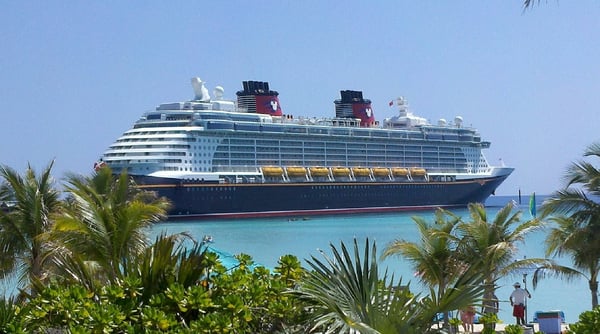
If you use oxygen, one of the things you must do before booking your cruise is check the cruise line's policies on oxygen therapy and other medical concerns. If you don't, and you show up without the right equipment, information, or forms, then you could get turned away from the ship.
To save yourself the heartache of missing your trip, get as much information as you can about the cruise line's rules and accommodations early on in your planning process. That means looking up their policies on medical equipment, prescription medications, and special medical needs.
Don't Forget to Give Advance Notice & Submit Required Forms

All cruise lines require you to notify them ahead of time if you use oxygen or have a serious medical condition. Some even limit you to certain types of oxygen equipment or limit the number of tanks you can bring.
At the very least, your cruise line will ask you to give them some basic information about your medical condition and the equipment you plan to bring. Many cruise lines have a special form for this, which you will need to fill out and submit a few weeks before your trip.
Your cruise line will likely need know much oxygen you're bringing and the dimensions of each oxygen tank. Some might even ask for paperwork from your doctor detailing your prescription medications and special medical needs.
As an example, here is a link to the medical “special services” form that you have to fill out for Disney Cruise Line.
You will also need to know the cruise line's rules for bringing oxygen on your person when you first come on board. For example, Disney Cruise Line allows you to bring two oxygen cylinders with you to your room, but all others must be delivered to the ship by a third-party supplier.
Most of the time, you can find general information about your cruise line's policies from their website. However, you should also contact the cruise line directly to verify the information and make sure you don't miss any necessary steps or forms.
Communicating with your cruise directly is the best way to ensure that your trip goes smoothly and the crew is prepared to accommodate your needs. It is important to give them information that is as accurate and complete as possible to avoid unnecessary hassle and potentially serious problems.
Here are some things you might want to ask your cruise line when you call:
- Am I allowed to bring liquid or compressed gas tanks on board if I need them for oxygen therapy?
- Are there any restrictions on the type of oxygen tanks (e.g. liquid or compressed-gas), size of oxygen tanks, or number of tanks I can bring?
- What forms do I need to fill out in order to bring my own oxygen supply and equipment on board?
- Do I need to fill out any forms in order to bring my prescription medications on board?
- Do I need to provide any documents from my doctor related to my oxygen therapy, prescription medications, or medical condition?
Cruise Line Medical Services

If you depend on oxygen therapy, then it's important to have access to healthcare during your cruise in case you experience a medical problem or emergency. That's why it's important to look into what kinds of medical services are available on the ship.
All cruise ships have a medical staff on board, but you can ask your cruise line about their specific services if you are concerned. They can answer any questions you have about their medical clinic or pharmacy, and verify that they have the proper equipment and staff to take care of you in an emergency.
You should also check with your medical insurance provider to make sure that you will be covered on the ship and at all your travel destinations. You may need to purchase extra travel or medical insurance to cover any special care you need during your cruise.
Accessibility Accommodations and Amenities
 |
| Photo by ironypoisoning on Flickr. |
Some cruise lines offer accessibility and disability services for guests with special medical needs. This can be helpful if you have limited mobility, as many people who use oxygen do.
You might even have the option of booking an “accessible” room that's designed to accommodate special physical needs. Every cruise line is different, so make sure to ask yours about their accessibility options before you book your room.
For example, Disney Cruise Line offers a range of accommodations, including:
- Rooms with wider doorways for mobility aids
- Shower seats and transfer benches
- Raised toilet seats
- Bathroom grab bars
- Sharps containers
- Threshold ramps
- Adjustable shower heads
- Emergency call buttons
Stocking Up on Oxygen Before Your Cruise

The vast majority of cruise ships do not have on-board oxygen available except in the case of emergencies, which means you will have to bring your own. That's why the the most vital part of planning your cruise is making sure you bring enough oxygen to last the whole trip.
How you should do this depends on how much oxygen you need and what kind of oxygen supply you use. It's important to consider the pros and cons of different options ahead of time, so you can secure your oxygen and arrange delivery in time to make your cruise.
Choosing an Oxygen Supply
Many people who use oxygen use a stationary oxygen concentrator in their home as their primary oxygen supply. However, you will need a more portable oxygen source to take with you when you go on your cruise.
There are two main types of oxygen you can use on a cruise ship:
- Liquid or compressed-gas oxygen tanks
- A portable oxygen concentrator
The easiest way to travel with oxygen, by far, is to use a portable oxygen concentrator. These devices are smaller, lighter, and significantly more convenient than other types of oxygen supplies.

Since it generates concentrated oxygen from normal, ambient air, a portable oxygen concentrator will never run out of oxygen as long as you keep the battery charged. This eliminates the need to stock up on heavy, bulky oxygen tanks.
If you cannot get a portable oxygen concentrator, you will need to make sure you have enough liquid or compressed-gas oxygen tanks to last the duration of your cruise. To do this, you will need to coordinate with your doctor and your oxygen supply company to get the right amount of oxygen delivered.
Oxygen tanks can be difficult during travel, since they take up a lot of space and require careful handling. Depending on the cruise line you use, you might be limited to a certain number of tanks, a certain size of tank, or a particular type of oxygen device.
This is why it's so important to look up your cruise line's policies and contact them before you book your trip. You can't be too careful or too thorough when it comes to planning this part of your cruise.
Making Sure You Have Enough Oxygen: Liquid and Compressed-Gas Oxygen Tanks
Since liquid and compressed-gas oxygen tanks hold a limited amount of oxygen, you have to be very careful to make sure you bring enough. Once you know exactly how long your cruise will be, talk to your doctor to figure out exactly how much oxygen you will need to make it through the trip.
It's worth taking the time to double-check your plans and verify your arrangements with the oxygen supplier a few days before your cruise. Don't be afraid to go over your oxygen supply estimate with your doctor more than once to catch any oversights or mistakes.
Additionally, you should make sure you have more than the minimum amount of oxygen you think you will need. You should bring enough extra oxygen to last at least a day or two beyond the expected length of the cruise.
This will ensure you can continue your oxygen therapy uninterrupted even in the case of an unexpected emergency or delay. It may also help you feel more secure to know you don't have to worry about pushing the limits of your oxygen supply.
However, if you use a portable oxygen concentrator, then you don't need to worry about running out of oxygen at all. The only thing you need to worry about is bringing enough battery power to keep your portable concentrator running the whole time.
Getting Your Oxygen Tanks on the Ship
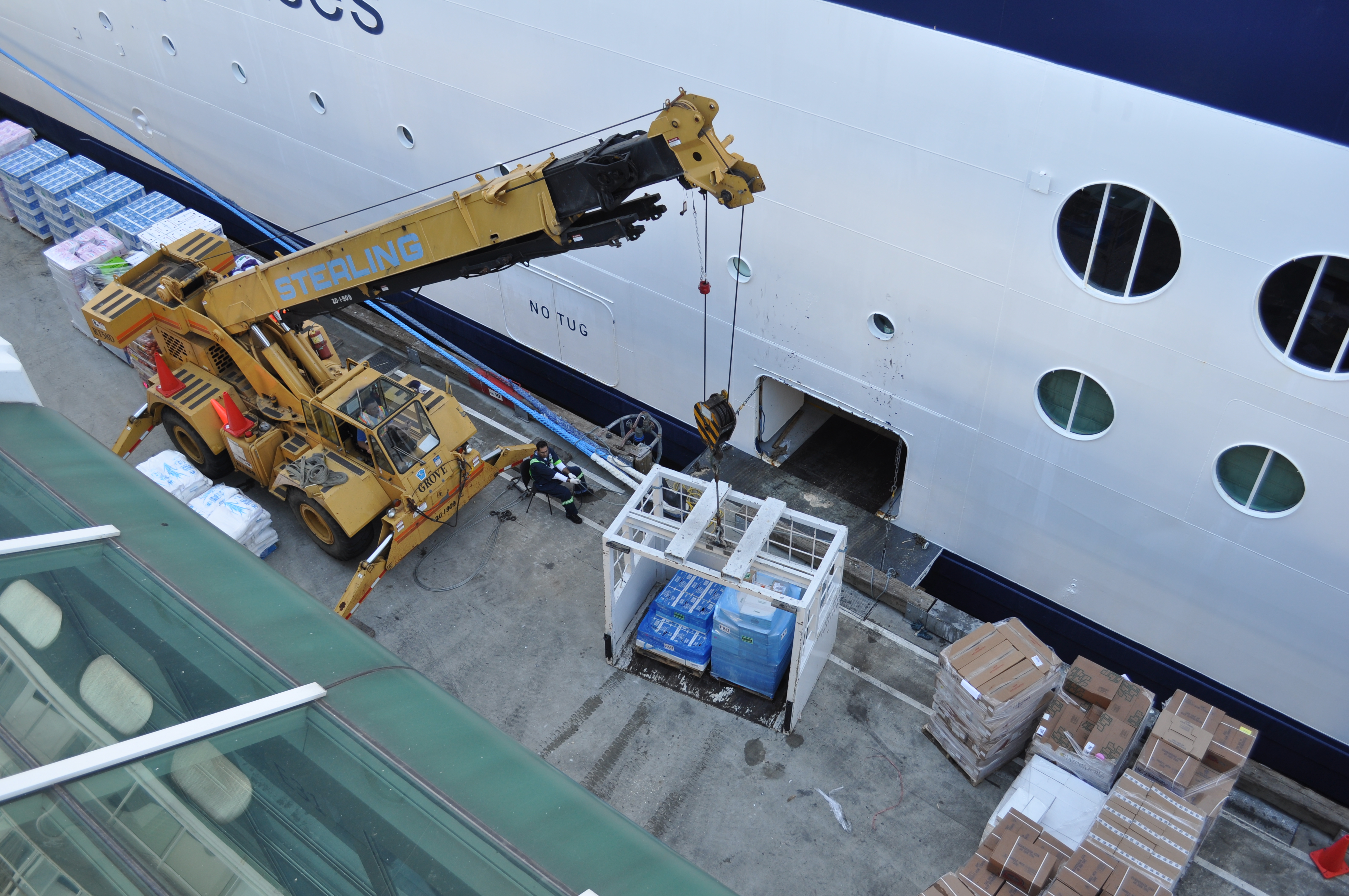
Because they are heavy and difficult to move, you will probably need arrange special transportation to get your liquid or compressed-gas oxygen tanks onto the cruise ship. You might be able to do this through your usual oxygen supply company, but you might need to find a different supplier that can deliver directly to the ship.
Your oxygen supplier will also need to pick up the empty oxygen tanks once you get back from the cruise. Make sure to ask them about any delivery or pick-up fees they charge and make sure they can guarantee on-time delivery and pick-up from the ship.
If you can transport the oxygen supply on your own, the cruise line might allow you to bring them to the ship yourself. However, some cruise lines will only accept oxygen tanks delivered by a third-party supplier, so be sure to verify their rules ahead of time.
You should also talk to your cruise line about how you are supposed to retrieve your oxygen tanks once aboard. For instance, you might need to call a specific number to have a crew member deliver a new oxygen tank to your room.
Making Sure You Have Enough Oxygen: Portable Oxygen Concentrators

Portable oxygen concentrators are convenient for just about any use, but traveling is where their benefits get a chance to really shine. First of all, they never run out of oxygen. Second, they are much smaller and much easier to transport than unwieldy oxygen tanks.
Taking a portable oxygen concentrator on your cruise saves you the hassle of having to stock an entire trip's-worth of oxygen tanks on the ship. That means no need to coordinate with an oxygen supply company, no need to arrange a large delivery of oxygen, and no worries about not bringing enough.
Instead, you just have to bring your portable oxygen concentrator, charger, a couple extra batteries, and then you're good to go. That way, you can spend more time planning the fun parts of your cruise and less time worrying about how to procure enough oxygen to last the entire trip
Don't Forget to Bring Your Charger and Extra Batteries
When you use a portable oxygen concentrator, you never have to worry about your oxygen supply as long as you keep the batteries charged. At a minimum, you should bring two sets of batteries to ensure you always have power when you need it.
You should also bring a separate, external battery charger to place the batteries in when they are not in use. This will allow you to use one set of batteries in your portable oxygen concentrator while the other set of batteries charge up.
Especially if you use oxygen 24/7, it's important to be diligent about switching out the batteries and remembering to keep one set charging at all times. If your concentrator uses up battery more quickly than your charger can charge the second set, then you may need to bring more than two.
To help you determine how much battery power you will need, you can refer to your portable oxygen concentrator's manual. It will tell you how long the battery will last on each flow rate the concentrator offers, which you can use to determine how often you'll need to switch the battery out.
If you do end up running out of battery, you can always continue to use your portable oxygen concentrator by plugging it directly into an outlet. While this limits your ability to move around, it's a safe back-up option to use while you wait for your extra batteries to charge.
Ideally, you should bring enough battery power to keep your portable oxygen concentrator going 24/7 while allowing them enough time to charge between rotations. To compare the battery life and other features on some of the top portable oxygen concentrators, you can take a quick look at this guide.
Don't Forget ALL Your Oxygen Delivery Equipment
In all the fuss over planning and packing for your trip, don't forget to bring all the oxygen supplies and accessories that you normally use. That includes your nasal cannula or oxygen mask, extension tubing, and any other accessories like your humidifier bottle or equipment cleaning supplies.
Since you'll be cut off from the rest of the world for potentially days at a time on your cruise, you may even want to bring some extra supplies. For instance, even if your nasal cannula will last the whole trip, bring an extra one along just in case.
When you're in a new, strange place like on a cruise ship, your things are more likely to get lost, damaged, or misplaced. Even if you are usually very good at keeping track of your things, you might find it more difficult when your routine and environment change.
That's why it's best to be over-cautious and bring along some extra oxygen supplies. You should always hope for the best, but you should also plan for the worst when your lungs and your health are at stake.
Here is a list of supplies you might want to include in your cruise packing list:
- Nasal cannula or oxygen mask (plus one extra)
- Extension tubing (plus one extra)
- Humidifier bottle
- Tubing clips
- Tubing tape or soft covers
- Swivel connectors
- Sanitizing wipes
- Sanitizing solution
- Your CPAP/BiPAP machine and related equipment (bring a travel sized machine for extra convenience)
- Any other prescription or over-the-counter medications you need
Don't Forget Your Medications

While most cruise lines have an on-board pharmacy, they usually only stock a small selection of medications. If you take any prescription or over-the-counter medicine, you should bring it with you to your cruise.
First of all, make sure you will have enough medication to last the entire length of your trip. If you are due for a refill before the end of the cruise, talk to your doctor about getting enough extra medication to last until you return.
Remember to check your cruise line's policies on prescription medications to make sure that you bring any necessary documents or forms. Even if the cruise line doesn't require it, it's a good idea to have your doctor print out a complete list of your medications, dosages, and treatment regimen to keep with you during your trip.
Protect Your Lungs from Environmental Conditions on Your Cruise
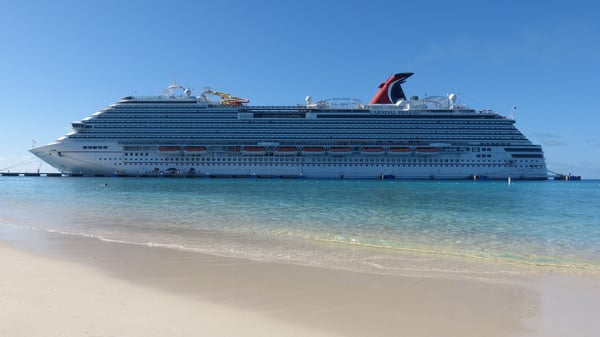
Along with all the logistics of bringing your oxygen, equipment, and medication on board, it's a good idea to look in to the specific conditions you will encounter on your cruise. Whether in your cabin, in the main ship, or at port destinations, it's important to make sure you can keep yourself and your lungs as safe and comfortable as possible.
Prepare for Irritants on the Ship
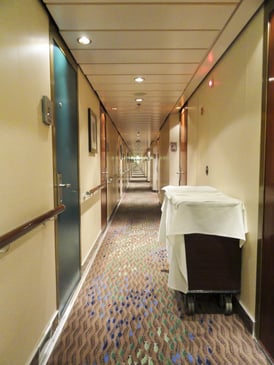
If you are sensitive to dust, allergens, or other respiratory irritants, check with your cruise line to make sure the environment in your cabin won't irritate your lungs. Make sure you book a non-smoking room and ask to be placed as far away from smoking areas as possible.
Fortunately, most cruise ships take cleanliness very seriously and follow strict sanitation guidelines set by the Center for Disease Control and Prevention (CDC). The CDC even has a vessel sanitation program that performs regular cruise ship inspections and publishes their results for the public to read online.
However, if your lungs are very sensitive to mild irritants, you may be able to request special bedding or other accommodations. Some cruises even offer special hypo-allergenic rooms if you're willing to pay the extra cost.
If you're bothered by mild fragrances and fumes, don't forget to pack your own fragrance-free shower and personal care products to bring with you on board. If you have a quick-relief medication prescribed by your doctor, always keep it close by during the cruise.
Once again, you can always discuss any concerns you have with your cruise line. They can more thoroughly explain their cleaning practices, room options, and help you make special arrangements if they are available.
You can find more information about the CDC's ship inspections and vessel sanitation program on their website here.
Prepare for Different Weather and Climates
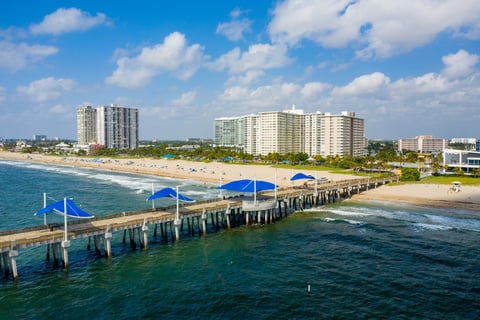
To get the full cruise experience, you'll want to disembark and explore all the ports your ship stops at during your trip. That could mean spending time in environments and climates that are very different than what you're used to back home.
If you suffer from a respiratory condition like asthma or COPD, these changes could have a noticeable effect on your lungs and how you feel. That's why you should pack and prepare for any significant changes in weather or climate that you will encounter on your cruise.
For example, visiting a port in a tropical area could expose you to extra heat and humidity, which tends to worsen symptoms in many people with serious respiratory conditions. Other environmental factors, including dust, allergens, pollution, and extreme temperatures can also affect your lungs.
If you do a little research before your cruise, you can anticipate any adverse conditions and prepare to take the appropriate precautions on your trip. Be ready to check local weather conditions, look up air quality forecasts, and pack comfortable clothing to match the climate.
Consider Taking a Special COPD-Friendly Cruise
Whether you're worried about taking a cruise on oxygen or simply want to take a trip with your peers, you might be interested in a Sea Puffer cruise. These are special cruises planned specifically for people who use supplemental oxygen.
Sea Puffers not only plans several cruises a year, but they provide full planning and medical support for everyone who participates. They make the process easy by taking care of just about everything, including making arrangements for all your medical and mobility needs (including securing your oxygen supply for the cruise).
The Sea Puffers even provide respiratory therapists on the cruise to help you feel as safe, comfortable, and supported as possible. They also hold on-board group events and activities to give participants opportunities to mingle, socialize, and discuss health concerns.
To learn more about the Sea Puffers, you can visit their website at seapuffers.com.
Conclusion
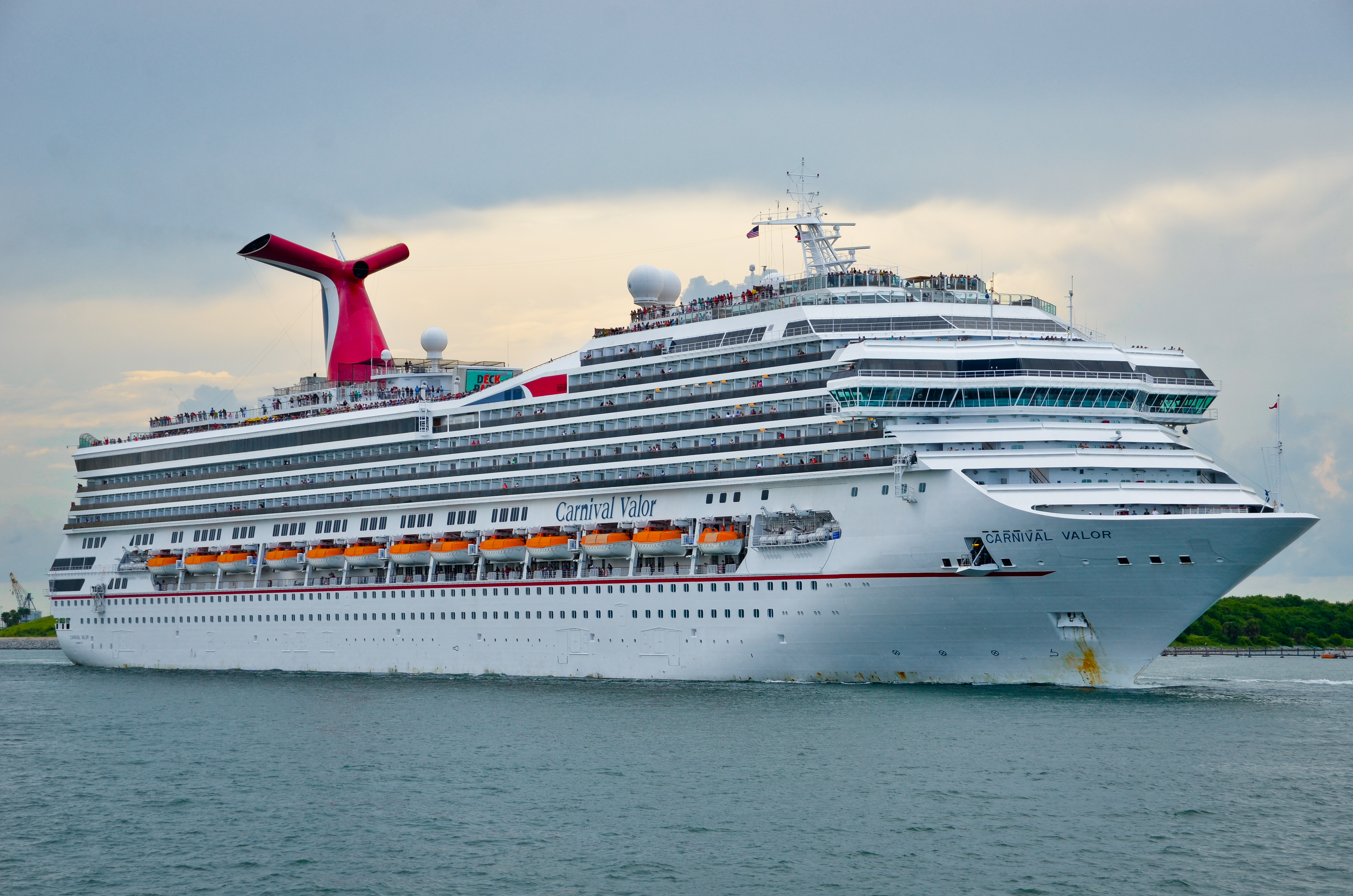
Whenever you or someone you love travels with oxygen, it's important to think ahead. This is especially true if you are taking a cruise, which can be even more complicated for those with special medical needs.
It takes careful planning to make sure that you have enough oxygen and an environment that will keep you safe on your cruise. You must also take special measures to ensure you can bring your oxygen and the equipment you need on the ship.
However, you shouldn't let the hassle get in the way of enjoying a fun vacation or cruise. As long as you take all of the necessary steps and plan for your needs ahead of time, you can focus on having fun on your cruise instead of worrying about your medical needs.


.png)




